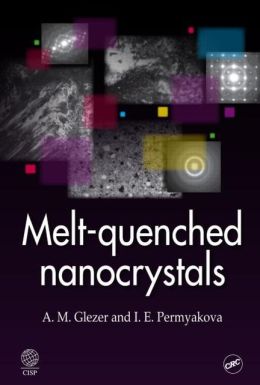 [内容简介]
[内容简介]
Melt quenching—the method of quenching from the liquid state—provides new opportunities for producing advanced materials with a unique combination of properties. In the process of melt quenching, attainment of critical cooling rates can produce specific structural states of the material. Nanocrystalline materials produced by melt quenching are classified as nanomaterials not only by their nanoscale structural elements but also by the effects these elements have on the properties of the material.
The result of 30 years of research, Melt-Quenched Nanocrystals presents a detailed and systematic analysis of the nanostructured state formed in the process of melt quenching and subsequent thermal and deformation effects. It covers the metallurgical and mechanical properties of nanomaterials, focusing particularly on properties derived from nanocrystals and their agglomeration. The text introduces four different types of nanocrystals that can be produced by melt quenching, each having different structures and properties:
- Type I nanocrystals formed when crystallization takes place completely during melt quenching
- Type II nanocrystals formed when melt quenching is accompanied by amorphous state formation along with partial or complete crystallization
- Type III nanocrystals formed when melt quenching results in the formation of the amorphous state, and nanocrystals can be produced as a result of the subsequent thermal effect
- Type IV nanocrystals formed when melt quenching leads to the formation of the amorphous state, and nanocrystals can be produced as a result of the subsequent deformation effect
The possible uses for these materials are extensive, with applications from coatings to biological compatibility. The final section of the book presents a discussion of existing and future applications of nanocrystals produced by different melt-quenching methods.
[目录]
Introduction
General classification of nanostructural states
Melt-quenching
Classification of melt-quenched nanocrystals
Melt-quenched nanocrystals (type I nanocrystals)
Main special features of structure and properties
Sendast alloy(Fe-Si-Al)
Fe-Si alloys
Fe-Al alloys
Fe-Ni alloys
Fe-Co alloys
Ni-Fe-Nb alloys
Fe-Cr-Al alloys
Ni3(Mn,V) alloys
Fe-C-Si alloys
Nanocrystals produced by melt quenching at rates close to critical (type II nanocrystals)
Nanocrystals produced by controlled annealing of the amorphous state (type III nanocrystals)
The amorphous state of the solid and its genetic relationship with nanocrystals
Main relationships of crystallisation
Martensitic transformation in nanocrystals
Mechanical properties
The magnetic properties
The shape memory effect
Nanocrystals produced by megaplastic deformation of the amorphous state (type IV nanocrystals)
The nature of large (megaplastic) strains
The phenomenon of nanocrystallisation in amorphous alloys, subjected to megaplastic deformation
Application of melt-quenched nanomaterials
Index

 新书报道
新书报道